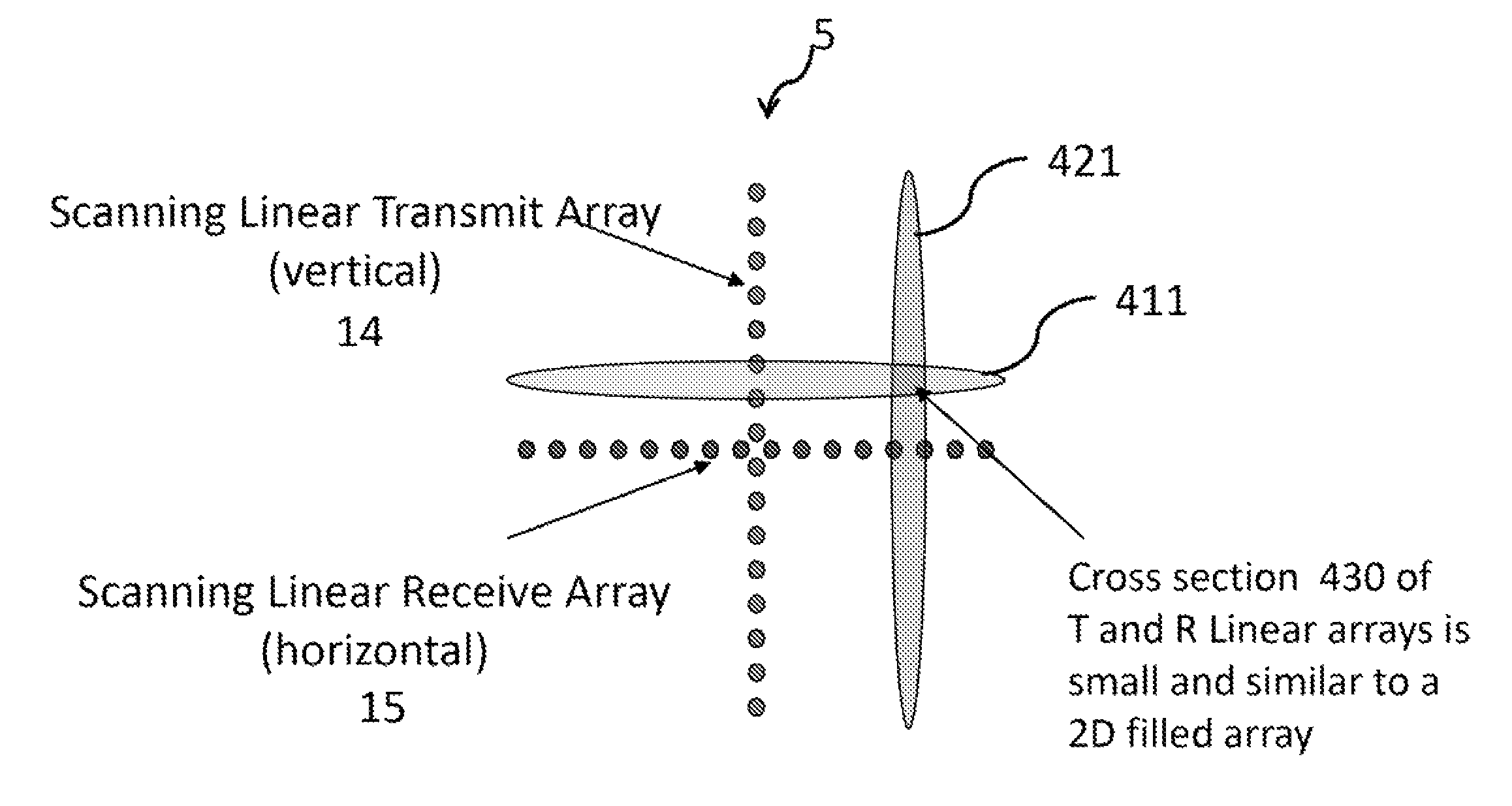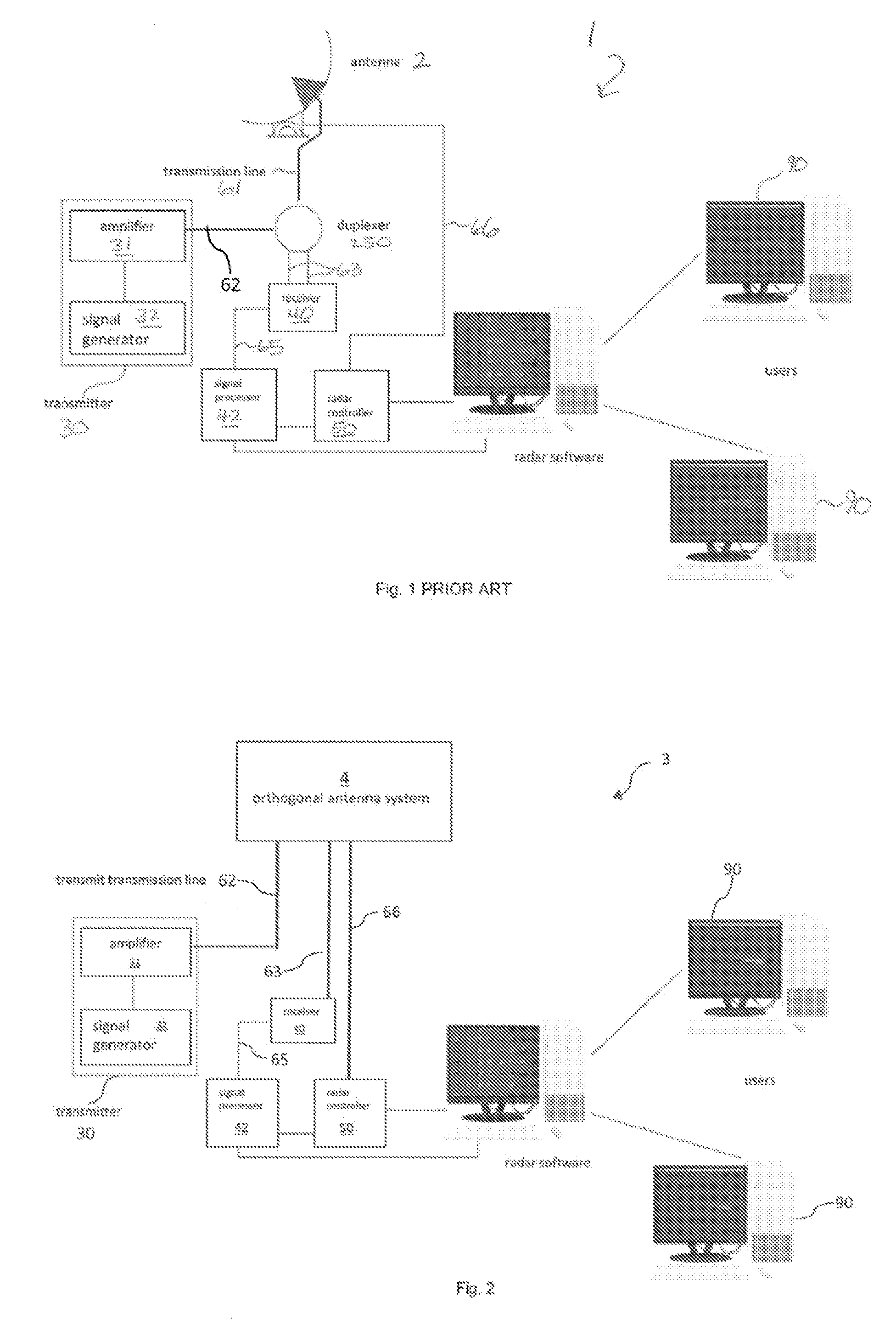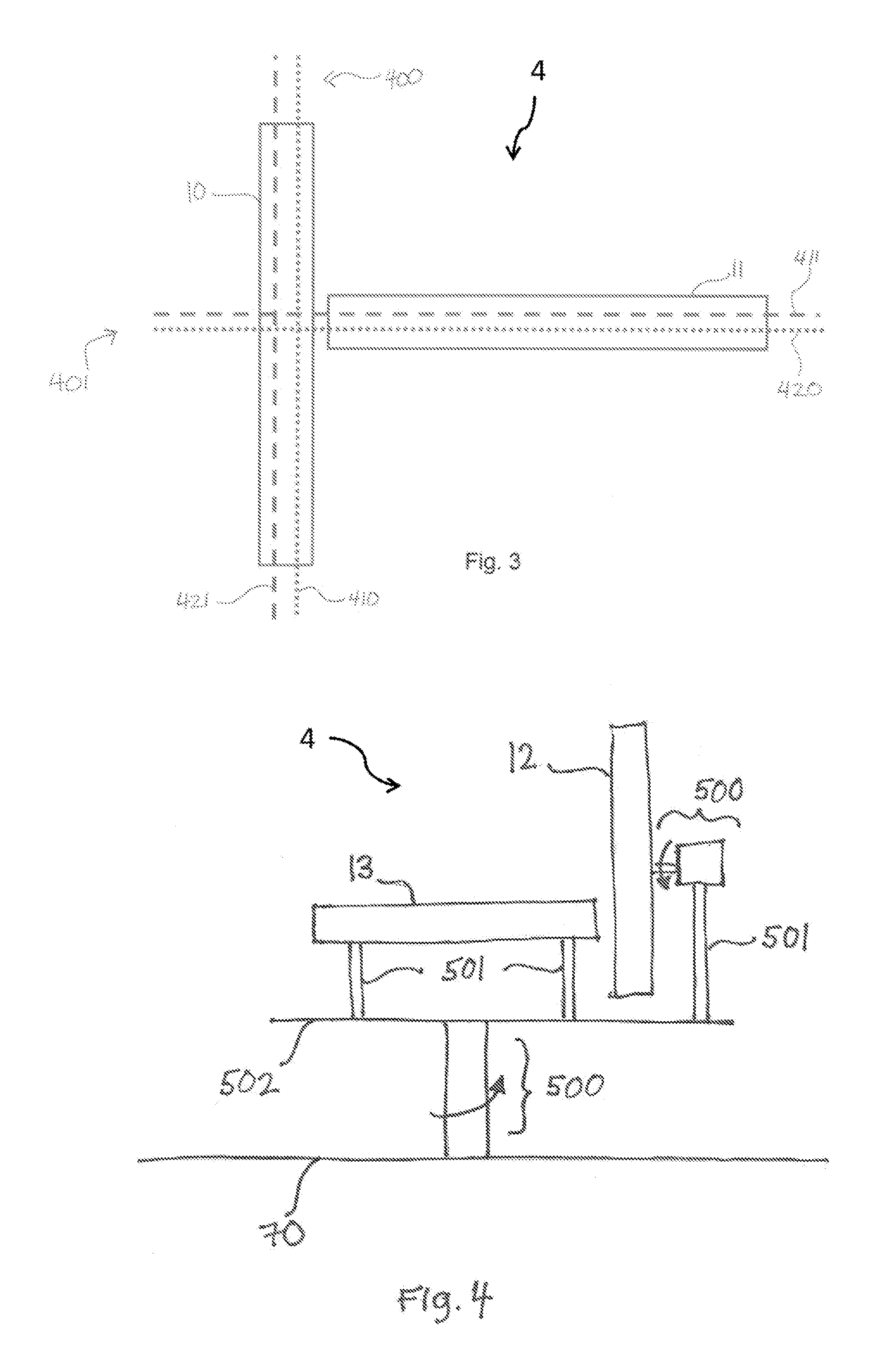Orthogonal linear transmit receive array radar
a transmit-receive array and radar technology, applied in the field of sensing systems, can solve the problems of high acoustic vibration and shock levels imposed on helicopters from environmental and operational conditions, and the cost of module integration into phased arrays, and achieve the effect of high resolution and high resolution
- Summary
- Abstract
- Description
- Claims
- Application Information
AI Technical Summary
Benefits of technology
Problems solved by technology
Method used
Image
Examples
Embodiment Construction
[0069]Referring now to FIG. 1, a schematic representation of a typical prior art radar system 1 is shown. Radar system 1 comprises antenna 2 for transmitting and receiving RF signals. Antenna 2 is connected by transmit / receive transmission line 61 to duplexer 250. Duplexer 250 is in turn connected to transmitter 30, via transmit transmission line 62. Transmitter 30 further comprises signal generator 32 and amplifier 31. Signal generator 32 produces a transmitted signal, which is amplified by amplifier 31 and then is fed to antenna 2. Duplexer 250 is also connected to receiver 40 via receive transmission line 63. Receiver 40 is in turn connected to signal processor 42, which is connected to radar controller 50. Antenna 2 receives a received signal reflected from a given object or target, and then the received signal is fed to duplexer 250 via transmission line 61, to receiver 40 via receive transmission line 63 and to radar controller 50 via controller transmission line 66. Finally, ...
PUM
 Login to View More
Login to View More Abstract
Description
Claims
Application Information
 Login to View More
Login to View More - R&D
- Intellectual Property
- Life Sciences
- Materials
- Tech Scout
- Unparalleled Data Quality
- Higher Quality Content
- 60% Fewer Hallucinations
Browse by: Latest US Patents, China's latest patents, Technical Efficacy Thesaurus, Application Domain, Technology Topic, Popular Technical Reports.
© 2025 PatSnap. All rights reserved.Legal|Privacy policy|Modern Slavery Act Transparency Statement|Sitemap|About US| Contact US: help@patsnap.com



